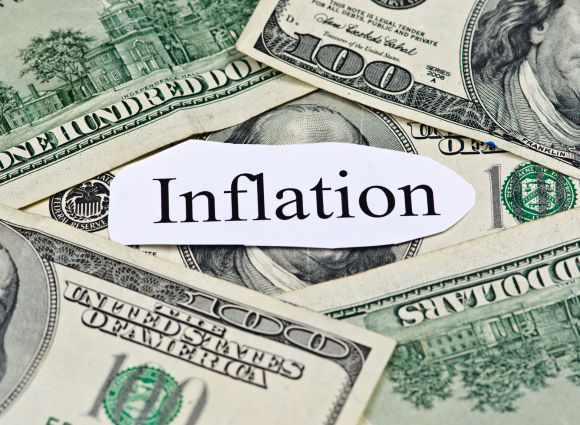
IRS releases inflation adjustments for 2025
The Internal Revenue Service (IRS) has announced the annual inflation adjustments for tax year 2025, affecting numerous tax provisions that will impact taxpayers when filing their returns in 2026. This comprehensive update includes changes to standard deductions, income tax brackets, credits, and various thresholds that influence the tax liabilities of individuals and businesses alike. Understanding these adjustments is crucial for effective tax planning and maximizing potential benefits.
Background
Each year, the IRS adjusts tax provisions to reflect changes in the cost of living due to inflation. These adjustments are designed to prevent “bracket creep,” where taxpayers are pushed into higher tax brackets or have reduced value in credits and deductions due to inflation rather than increases in real income. By staying informed about these changes, taxpayers can better plan their finances, ensure compliance, and optimize their tax positions.
Key Changes for Individuals and Families
Standard Deduction Increases
One of the most notable changes for the 2025 tax year is the increase in the standard deduction amounts across all filing statuses. This adjustment aims to reduce taxable income for many individuals, potentially lowering overall tax liability and simplifying the filing process for those who choose not to itemize deductions.
For single taxpayers and married individuals filing separately, the standard deduction has risen to $15,000, an increase of $400 from the previous year. Married couples filing jointly will see their standard deduction increase by $800 to $30,000. Heads of households will benefit from an increase of $600, bringing their standard deduction to $22,500. These increases may influence the decision between itemizing deductions and taking the standard deduction, as the higher amounts may provide greater tax savings for some taxpayers.
Adjusted Marginal Income Tax Rate Thresholds
The IRS has also adjusted the income thresholds for each marginal tax rate to account for inflation. Although the top tax rate remains at 37%, it now applies to higher income levels than in the previous year, which could potentially reduce the tax burden for some high-income earners by placing more of their income in lower tax brackets.
The updated tax brackets for single filers and married couples filing jointly are as follows:
| Tax Rate | Single Filers | Married Filing Jointly |
|---|---|---|
| 37% | Over $626,350 | Over $751,600 |
| 35% | Over $250,525 | Over $501,050 |
| 32% | Over $197,300 | Over $394,600 |
| 24% | Over $103,350 | Over $206,700 |
| 22% | Over $48,475 | Over $96,950 |
| 12% | Over $11,925 | Over $23,850 |
| 10% | $11,925 or less | $23,850 or less |
These adjustments mean that some taxpayers may find themselves in a lower tax bracket compared to the previous year, potentially resulting in tax savings. It’s important to review how these changes affect your taxable income and consider any necessary adjustments to withholding or estimated tax payments.
Adjusted Long-term Capital Gains Tax Rate Thresholds
Long-term capital gains refer to the profit made from the sale of an asset held for more than a year. The following are updated long-term capital gains tax brackets:
| Filing Status | 0% Tax Rate Threshold | 15% Tax Rate Threshold | 20% Tax Rate Threshold |
|---|---|---|---|
| Single | Up to $48,350 | $48,351 to $533,400 | Over $533,400 |
| Married Filing Jointly | Up to $96,700 | $96,701 to $600,050 | Over $600,050 |
| Married Filing Separately | Up to $48,350 | $48,351 to $300,000 | Over $300,000 |
| Head of Household | Up to $64,750 | $64,751 to $566,700 | Over $566,700 |
Alternative Minimum Tax (AMT) Exemption Adjustments
The Alternative Minimum Tax (AMT) is designed to ensure that high-income taxpayers pay a minimum level of tax by limiting certain deductions and exclusions. For 2025, the AMT exemption amounts have increased, potentially reducing the number of taxpayers subject to this tax.
The exemption for unmarried individuals has increased to $88,100, up from $81,300 in 2024, with the phase-out beginning at $626,350. Married couples filing jointly have an exemption amount of $137,000, increased from $126,500, with a phase-out starting at $1,252,700. For married individuals filing separately, the exemption is $68,650, and the phase-out begins at $626,350.
Higher exemption amounts and phase-out thresholds mean that fewer taxpayers may be subject to the AMT. Those who have been affected by the AMT in previous years should assess whether these changes impact their tax planning strategies.
Earned Income Tax Credit (EITC) Adjustments
The Earned Income Tax Credit (EITC) is a valuable benefit for low- to moderate-income workers, particularly those with children. For the 2025 tax year, the maximum EITC amount for taxpayers with three or more qualifying children has increased to $8,046, up from $7,830 in 2024. Adjustments have also been made to income thresholds and phase-out ranges, potentially allowing more taxpayers to qualify for the credit or receive a larger amount.
It’s crucial for eligible taxpayers to understand these changes, as the EITC can significantly reduce the amount of tax owed or result in a refund. Taxpayers should ensure that they meet all eligibility requirements and consider consulting a tax professional to maximize this benefit.
Qualified Transportation Fringe Benefits
Employees who receive transportation benefits from their employers, such as transit passes or parking allowances, will see an increase in the monthly exclusion amounts for 2025. The monthly limit for qualified transportation fringe benefits has risen to $325, up from $315 in 2024. This includes benefits for transit passes, commuter highway vehicles, and qualified parking.
These adjustments mean that employees can exclude a larger amount of transportation benefits from their taxable income, potentially leading to tax savings. Employers may need to update their payroll systems to reflect the new limits and ensure compliance.
Health Flexible Spending Arrangements (FSAs)
Health FSAs allow employees to set aside pre-tax dollars to pay for eligible medical expenses, reducing taxable income. For 2025, the maximum annual contribution limit for Health FSAs has increased to $3,300, up from $3,200 in 2024. This change provides an opportunity for taxpayers to allocate more pre-tax income toward healthcare expenses, potentially leading to tax savings.
For plans that permit the carryover of unused amounts, the maximum carryover has increased to $660, a $20 increase from the previous year. This adjustment offers greater flexibility in managing healthcare spending and can help employees avoid forfeiting unused funds at the end of the plan year.
Employees should evaluate their anticipated medical expenses and consider adjusting their FSA contributions during open enrollment periods to take advantage of the increased limits.
Medical Savings Accounts (MSAs)
Adjustments have also been made to the contribution and deductible limits for Medical Savings Accounts (MSAs), available to certain small businesses and self-employed individuals with high-deductible health plans (HDHPs).
Self-Only Coverage
For individuals with self-only coverage, the minimum annual deductible has increased to $2,850 (up from $2,800), and the maximum annual deductible is now $4,300 (up from $4,150). The maximum out-of-pocket expenses have increased to $5,700 (from $5,550).
Family Coverage
For family coverage, the minimum annual deductible has risen to $5,700 (up from $5,550), and the maximum annual deductible is now $8,550 (up from $8,350). The limit on out-of-pocket expenses has increased to $10,500 (from $10,200).
These adjustments allow individuals and families to contribute more to their MSAs, potentially increasing their tax-advantaged savings for healthcare expenses. Taxpayers participating in MSAs should review these changes and consider adjusting their contributions accordingly.
Foreign Earned Income Exclusion
For U.S. citizens and resident aliens working abroad, the Foreign Earned Income Exclusion allows the exclusion of a portion of their foreign earnings from taxable income. For 2025, the exclusion amount has increased to $130,000, up from $126,500 in 2024. This adjustment reflects changes in living costs abroad and can provide significant tax savings for eligible taxpayers.
To qualify, individuals must meet specific tax home and residency requirements. Those working overseas should consider how this increased exclusion amount affects their tax planning and ensure they maintain proper documentation to support their claims.
Estate and Gift Tax Adjustments
The IRS has increased the estate and gift tax exclusion amounts for 2025, offering more opportunities for wealth transfer without incurring federal taxes. The basic exclusion amount for estates has risen to $13,990,000, up from $13,610,000 in 2024. This means individuals can leave nearly $14 million to heirs without triggering federal estate taxes.
Additionally, the annual exclusion for gifts has increased to $19,000, up from $18,000. This allows individuals to gift up to $19,000 per recipient each year without affecting their lifetime exclusion amount or incurring gift taxes.
These adjustments are significant for estate planning, as they enable taxpayers to transfer more wealth to their beneficiaries tax-free. Those with substantial assets should review their estate plans in light of these changes and consider strategies to maximize the tax benefits.
Adoption Credit Adjustments
Families adopting children may benefit from an increased Adoption Tax Credit in 2025. The maximum credit for the adoption of a child with special needs has risen to $17,280, up from $16,810 in 2024. This credit applies to qualified adoption expenses, making adoption more affordable for families.
The same amount applies to the maximum exclusion for employer-provided adoption assistance. Taxpayers considering adoption should be aware of these increases and consult with a tax professional to understand how to claim the credit and what expenses qualify.
Key Changes for Business Owners
Business owners should pay particular attention to the following adjustments, which may affect both business operations and personal tax situations.
Section 179 Expensing Limits
Section 179 allows businesses to deduct the full purchase price of qualifying equipment and software purchased or financed during the tax year. The limits for 2025 have been adjusted:
- Maximum Deduction: Increased to $1,250,000.
- Phase-Out Threshold: Deduction begins to phase out after $3,130,000 of qualifying equipment purchases.
This adjustment enables businesses to deduct more upfront, encouraging investment in business equipment and potentially reducing taxable income.
Social Security Wage Base
The Social Security Administration adjusts the maximum amount of earnings subject to Social Security tax based on changes in the national average wage index. For 2025:
- Maximum Earnings Subject to Social Security Tax: Increased to $176,100, up from $168,600 in 2024.
- Increase in Maximum Social Security Tax: Maximum Social Security tax paid by employees and employers will rise accordingly.
Business owners should account for this increase in payroll calculations and budget for the higher employer contributions.
Qualified Business Income Deduction
The Qualified Business Income (QBI) deduction, introduced by the Tax Cuts and Jobs Act (TCJA) in 2017, is a tax benefit for owners of pass-through businesses, allowing them to deduct up to 20% of their qualified business income on their individual tax returns. The following table shows the threshold to claim the maximum deduction:
| Filing Status | Threshold |
|---|---|
| Single | $197,300 |
| Married Filing Jointly | $394,600 |
| Others | $197,300 |
Implications for Taxpayers
The inflation adjustments for 2025 have several implications for taxpayers, potentially affecting tax liabilities and financial planning strategies. Higher standard deductions may reduce taxable income for many, simplifying the filing process for those who might otherwise itemize deductions. Adjusted tax brackets could result in lower marginal tax rates for some individuals, leading to decreased tax bills and increased take-home pay.
Increased thresholds for the AMT exemptions mean fewer taxpayers may be subject to the AMT, simplifying tax calculations and potentially reducing tax liability. Higher contribution limits for Health FSAs and MSAs offer opportunities for greater tax-advantaged savings on medical expenses, which is particularly beneficial given rising healthcare costs.
The adjustments to the estate and gift tax exclusions provide significant benefits for individuals engaged in estate planning. By allowing more wealth to be transferred tax-free, taxpayers can better achieve their legacy and gifting goals while minimizing tax consequences.
Overall, these changes underscore the importance of proactive tax planning. Taxpayers should evaluate how the adjustments affect their personal situations and consider strategies to optimize their tax positions.
Recommendations and Next Steps
In light of these adjustments, taxpayers should consider the following actions to maximize benefits and ensure compliance:
Review Withholding and Estimated Tax Payments: Adjust your withholding or estimated tax payments to reflect changes in tax brackets and deductions, helping to avoid underpayment penalties or unexpected tax bills when filing returns.
Maximize Contributions to Tax-Advantaged Accounts: Take advantage of increased limits for Health FSAs, MSAs, and potentially retirement accounts (if limits are adjusted). These contributions reduce taxable income and can provide significant tax savings.
Update Estate Planning Strategies: Consult with an estate planning professional to leverage the higher estate and gift tax exclusions. This may involve revising wills, trusts, and gifting strategies to optimize the transfer of assets to beneficiaries.
Consider Timing of Income and Deductions: Depending on your financial situation, it may be advantageous to defer or accelerate income or deductions to align with the adjusted tax brackets and thresholds.
Consult with a Tax Professional: Tax laws are complex, and individual circumstances vary. Engaging a tax advisor can provide personalized guidance to navigate these changes, ensure compliance, and identify opportunities for tax savings.
Conclusion
The IRS’s inflation adjustments for the 2025 tax year introduce several changes that can benefit taxpayers. By increasing standard deductions, adjusting tax brackets, and raising various thresholds, these changes aim to prevent inflation from eroding the value of tax benefits. Staying informed and proactively adjusting tax planning strategies is essential to make the most of these opportunities. Whether it’s through maximizing contributions to tax-advantaged accounts, optimizing estate plans, or simply understanding how the adjustments affect your tax bracket, these changes can have a meaningful impact on your financial well-being in the coming year.



